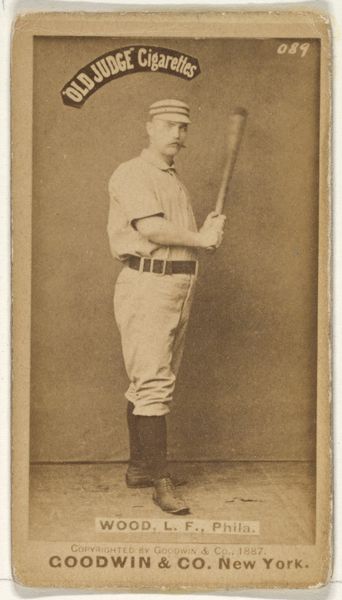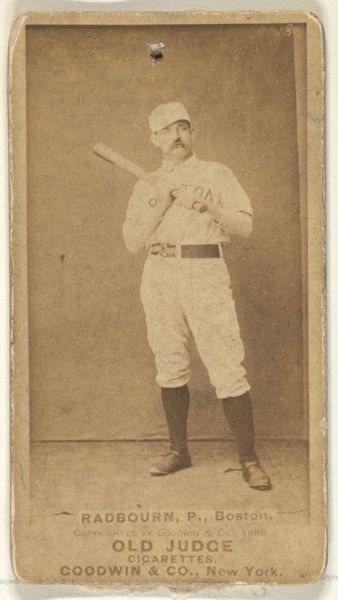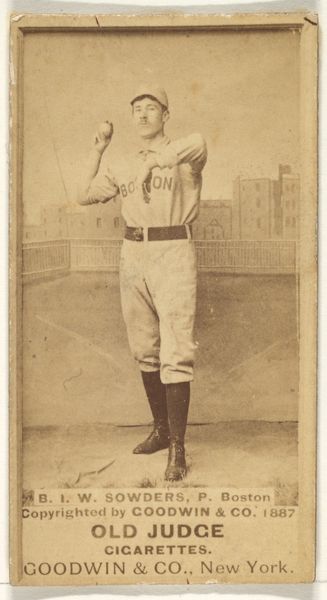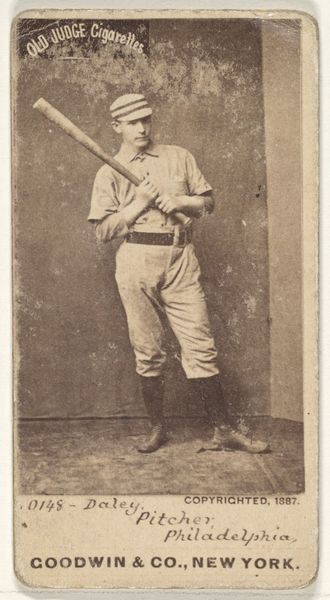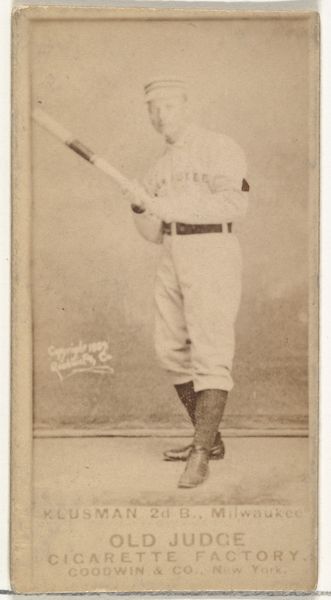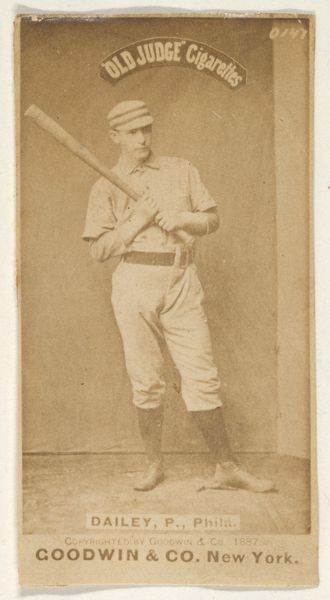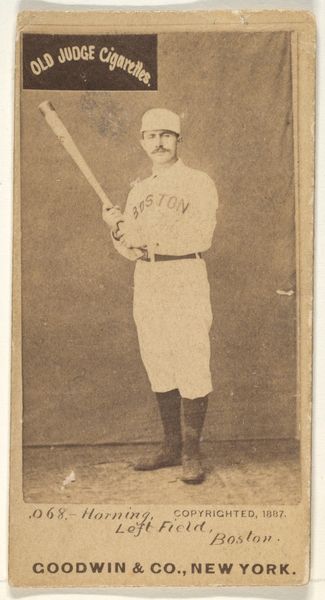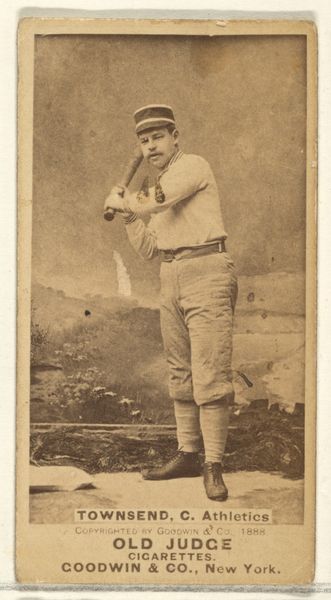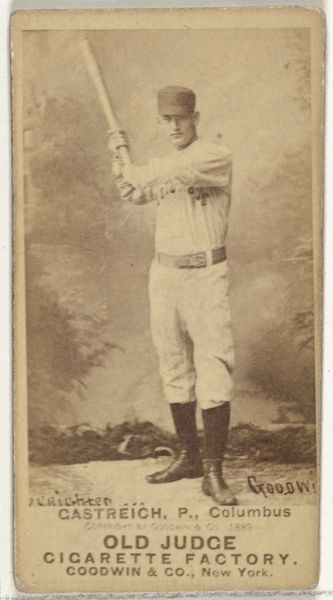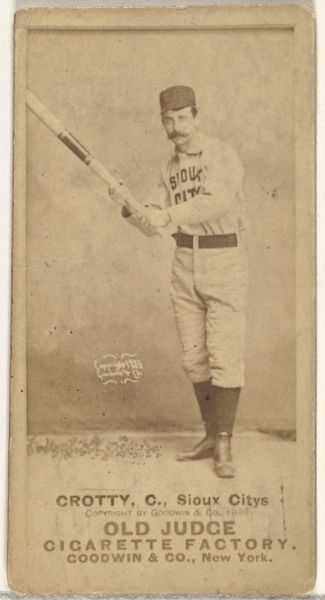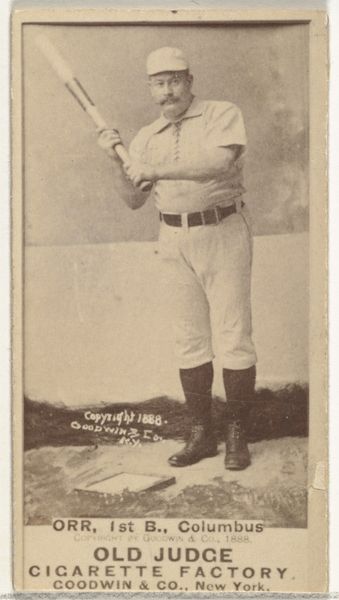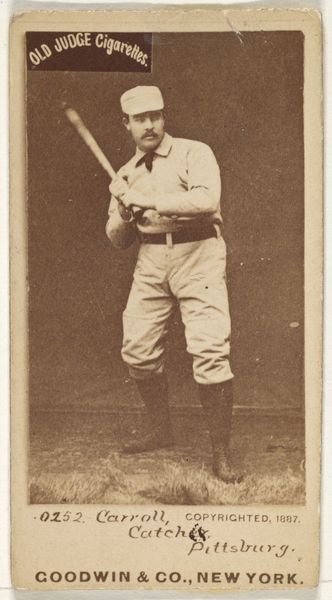
Thomas Turner, Center Field, Minneapolis, from the Old Judge series (N172) for Old Judge Cigarettes 1889
0:00
0:00
drawing, print, photography, gelatin-silver-print
#
portrait
#
drawing
# print
#
impressionism
#
baseball
#
photography
#
historical photography
#
gelatin-silver-print
#
19th century
#
men
#
history-painting
Dimensions: sheet: 2 11/16 x 1 3/8 in. (6.9 x 3.5 cm)
Copyright: Public Domain
Editor: This is a striking image! It's a gelatin-silver print from 1889, titled "Thomas Turner, Center Field, Minneapolis," from the Old Judge Cigarettes series by Goodwin & Company. What immediately jumps out at me is the stark contrast, the almost manufactured nature of this, what was the impetus of this work, and what does it say about consumption in art? Curator: Indeed. Note how this photograph of Thomas Turner wasn’t destined for a museum wall. Instead, it was bound for a cigarette pack, a promotional item distributed by the Goodwin & Company. The materiality here speaks volumes about art's place within the burgeoning consumer culture of the late 19th century. Editor: So, the art becomes essentially advertisement? How does this impact the value of the artwork itself? Curator: Precisely. Consider the photographic process, the specific choice of gelatin-silver, which allowed for mass reproduction. This technique democratized image making and consumption but simultaneously placed it within the grasp of capitalist enterprises. Also, think about labor -- someone had to manufacture the cigarettes, someone had to take and develop this photograph. How are those individual contributions to the piece relevant here? Editor: So, the artistry is not just in the final product, but the labor and distribution? Curator: Exactly. The Old Judge series provides a lens to examine the social context of art, challenging notions of 'high art' by blurring the boundaries between artistic creation and commercial imperative. Do we elevate it because of this context? Editor: That's fascinating. I guess I had never considered how much the act of consumption shapes the definition and accessibility of art. It makes you wonder what everyday items today will become museum pieces tomorrow! Curator: This blend of commerce and baseball truly changed how images, in this instance, were regarded in culture at large. Thank you for highlighting this undercurrent!
Comments
No comments
Be the first to comment and join the conversation on the ultimate creative platform.
